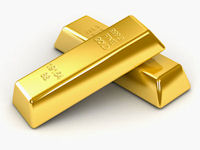Obama’s Huge Hidden Tax on the Poor
In a world where everyone understood economics, I should never have to write this article. The effects of Barack Obama’s policies should be clear and widely opposed by the very people he claims to champion. What has he done? In a word: inflation.
From the stimulus to all of the “quantitative easing,” Barack Obama has caused widespread inflation. His most recent endeavor to fix the economy is QE3, or the third round of quantitative easing. Quantitative easing is, simply put, printing money.
What is so bad about that? Well, it makes more money available. That drives up prices and makes everything more expensive. This is particularly bad for the poor. Consider that gas was less than $2 a gallon when Obama took office and now it is over double the price at roughly $4 a gallon.
The point I am making has been made in greater detail by Anthony Randazzo at Reason magazine. However, I want to give a simpler analysis that still explains the his essential argument:
It won’t be a surprise to read conservatives lambasting this as unconventional monetary policy meant to help re-elect President Obama. And inflation hawks have already started screeching. But the loudest cry of “for shame” should be coming from the Occupy Wall Street movement.
Let’s get one thing out of the way first. Printing money is a tax. It is a tax that gives the government more money to spend and charges people in the form of inflation. That is simply supply and demand.
So, who does the tax hit? Well, inflation hits everyone who buys things. That’s everyone. However, it also increases the price of assets. So, if you have assets like gold, you have seen the price increase from $871.96 in 2008 to about $1800 today.
Assets help guard against inflation because everything that is owned is worth more. Today, we all pay more for gasoline and everything else, but rich people, who own a great deal more, have seen their assets appreciate. The poor, who own nothing, are simply stuck paying the bill.
These is the effect of inflation, whether we borrow money for the stimulus or print it for quantitative easing.
September 16, 2012 at 10:53 am Comments (0)



